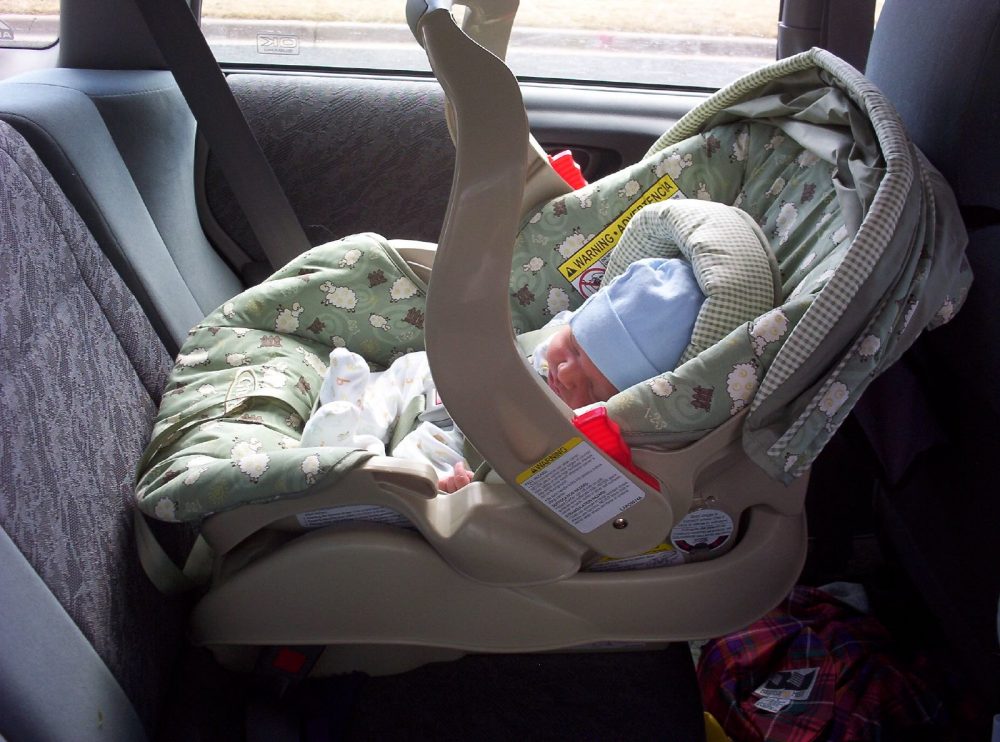Car Seat Stages As Your Child Grows

Photo: Wiegand Family via CC
If you’re about to be a parent or plan on being one at some point in the future, it’s good to know which car seats correspond to which stage of a child’s growth. Here’s a brief overview of the car seat progression so you have a better idea of what car seats you’ll need to buy and when as you enjoy watching your young one develop.
Shield Your Loved Ones: Discover the advantages of OnStar
Different seats for different stages
Confused about car seat or booster seat use? Learn more in CDC’s new #VitalSigns report. http://t.co/zs4cbLiyky http://t.co/eesI1M86UB
— CDC (@CDCgov) February 13, 2014
As the above infographic illustrates, the National Highway Traffic Safety Administration recommends certain car seats depending on your child’s age, weight, and height. There are four main categories to car seat use: rear-facing car seat, forward-facing car seat, booster seat, and seat belt.
Rear-facing car seat
The Centers for Disease Control and Prevention recommends using a rear-facing car seat for babies until they are at least 2 years of age. You’ll also want to keep an infant in a rear-facing car seat until they reach the maximum height and weight limits that the manufacturer recommends. Rear-facing car seats typically come in one of two designs: infant car seats that are rear-facing only or convertible seats that you can switch to a forward-facing position later on when your child grows.
Forward-facing car seat
For a child 2 years of age or older, use a forward-facing car seat. Though the CDC suggests using this type of car seat until your child is 5 years old, it really depends on the child’s size, as well as the manufacturer’s recommended height and weight limits for the car seat that you’re using.
Booster seat
For children around 5 years of age and older, use a booster seat. The CDC advises that young ones use a booster seat until the vehicle’s seat belt fits them properly, with the shoulder belt going across their chest and the lap belt across their upper thighs.
Seat belt
Once a child is approximately 4 feet 9 inches tall, it’s safe to say goodbye to a booster seat and let them use your vehicle’s built-in seat belt. This generally happens in the 9-to-12-year-old range, as the CDC shares.
One caveat
It’s important to note that not every car seat will fit properly inside your particular vehicle. So, make sure to test it inside your car before you start using it, in case you need to exchange it for a different car seat design that is more compatible with your car’s interior dimensions.
Expand your car-seat knowledge when you read this article. Then discover the intriguing history of the car seat to wow your parent friends with some trivia.
Family-First Designs: Browse these family-friendly GMC models

Whitney Russell resides in Dayton, though her spirit can be found beach-bumming in Puerto Rico (the land of her half-Puerto Rican heritage). When not crafting car-related content, she can be found chasing after the most amazing toddler in the world, watching her “beaver” of a husband build amazing woodworking projects, hanging out with two crazy dogs, and visiting family and friends. She also enjoys traveling, crafting, and binge-watching period dramas when time allows. See more articles by Whitney.

